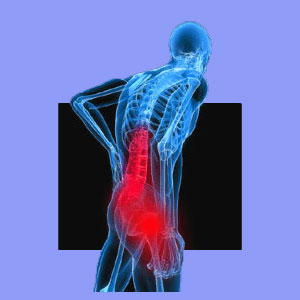
Sciatica hip pain is a symptomatic condition common to many lower back and sacroiliac joint concerns. Hip pain can be a result of a structural issue in the spine or actual hip joint, but can also be enacted by a psychoemotional sciatica process using ischemia as its causative mechanism. It is a well known fact that many cases of diagnosed hip bursitis are actually misdiagnosed psychologically-induced pain conditions. This occurrence is well documented and explained in the literary contributions of Dr. John E. Sarno.
This article will provide a fresh perspective on the potential causes of a variety of hip and leg pain syndromes often associated with the sciatic nerve.
Back and Hip Pain Expressions
Sciatica can affect the lower back, buttocks, legs or feet. Sometimes, patients have one of the worst expressions in or around the hip joint. Hip socket degeneration issues are common, especially in elderly patients and those with advanced arthritic conditions. However, many cases of hip pain are incorrectly diagnosed as stemming from an anatomical shortcoming or deficiency, when all along the structural issues are coincidental to any pain experienced.
Dr. John Sarno of the NYU Medical Center/Rusk Institute of Rehabilitation Medicine is known for diagnosing many hip complaints as a mindbody condition known as tension myoneural syndrome. Although this diagnosis has been controversial in traditional medical science, there is certainly no denying his incredible cure rate.
It should be mentioned that since many nerve innervation pathways pass through, around or over the hip region, it is very possible for compression or irritation of many nerve roots to enact symptoms there. Furthermore, since the hip is a large area and most patients do not exactly know where the actual joint resides internally, pain in a sizeable region may be attributed to the hip, when in fact, it may better correlate to the upper leg, buttocks or sacroiliac anatomical zones.
Solutions for Hip Pain
Structural hip socket issues usually respond well to physical therapy, although some may require surgical intervention and even placement of artificial joints. Luckily, these cases represent the minority of hip pain experiences. Remember, this is a hardy joint and some degree of deterioration is normal and expected.
Most hip pain in combination with general sciatica pain is almost always lumped together under one diagnosis, typically entailing blaming the pain on a herniated lumbar disc or spinal osteoarthritic process. While these sources of pain may be correct in some instances, they are not likely to be the actual cause of pain in most people with chronic sciatic nerve pain which has defied treatment time after time.
Alternative theories for hip and leg pain may include the following causative mechanisms and their respective therapy choices:
Leg length discrepancies of a functional or structural nature may enact pain which mimics sciatica hip pain. Depending on the nature of the leg length difference, treatment may consist of chiropractic, physical therapy or orthotic shoes and/or inserts.
Muscle imbalances can change ambulation and gait patterns, potentially causing hip and leg pain. These scenarios can also be treated with chiropractic or physical therapy, but some patients choose Alexander Technique practitioners instead.
Soft tissue concerns, such as fibromyalgia, might enact symptoms in the legs and hips. This epidemic health issue is almost exclusively treated using powerful and usually toxic pharmaceutical products.
Help for Sciatica Hip Pain
Hip pain can be very scary and functionally limiting, just like many other severe lower body pain conditions. The hip joint is very strong and normal degeneration is not likely to cause severe pain, especially in patients under the age of 65.
For patients who have been diagnosed with sacroiliac joint problems or hip bursitis, but have not been able to realize lasting relief, I highly suggest reconsidering the validity of the diagnostic conclusion. If the theory was correct, then the pain would have resolved with treatment. However, the fact that the pain remains or has even intensified always makes me think misdiagnosis. This same rule applies for most of the typical spinal causes of sciatica and hip symptoms, as well.




